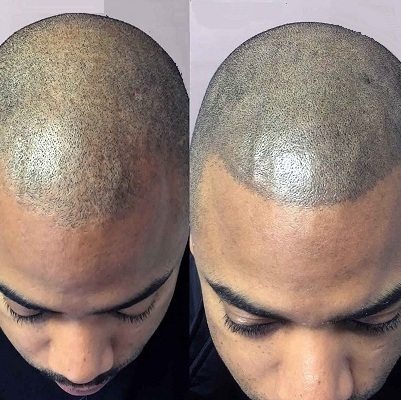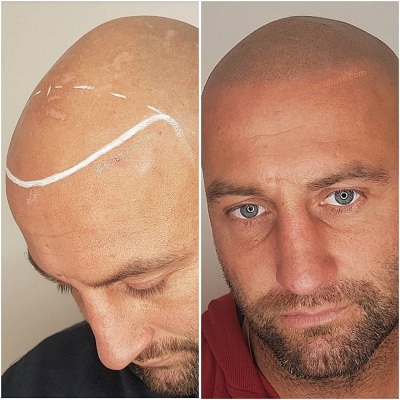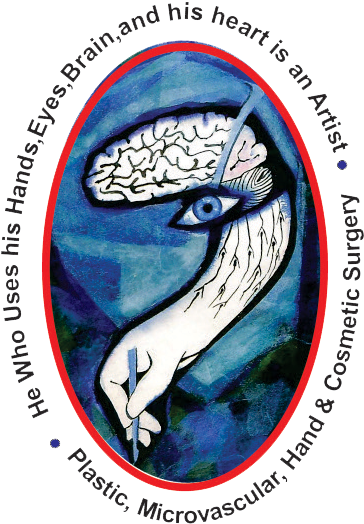Scalp Micro Pigmentations
Micropigmentation, also known as permanent cosmetics, is the process of inserting colored pigments just beneath the skin’s surface. The process is similar to tattooing.





Everything You Need to Know About Scalp Micropigmentation
Scalp Micropigmentation is an extremely intricate procedure, and because it is a form of tattooing, you leave our office with guaranteed, permanent results.
Each client’s needs are unique. At Cosmo, during each treatment our pigment is tailored to your exact skin color and type.
The treatment at Cosmo is administered softly, in a gentle approach, and results look unbelievably natural.
The quality of your treatment depends on two things:
- Using the correct machines, micro-needles and pigments
- Getting your treatment from the most skilled and experienced practitioners.
Questions? We got Answers!
The goal of SMP isn’t to create hairlike lines as you would when microblading eyebrows, but instead to use tiny, layered dots in different hues of black to replicate the look of a shadow on your scalp. This style, referred to as pointillism, is done to create natural-looking depth and definition.
A skilled physician will work to ensure the dots look like a natural hair follicle and blend in seamlessly with your complexion.
This process may be useful for people who experience all forms of hair loss. This includes folks with:
- cancer
- alopecia
- thinning hair
- male and female pattern baldness
Before the procedure, your SMP Physician will apply a topical numbing agent to your scalp. That said, it’s good to keep in mind that there may still be some discomfort. However, how much discomfort largely depends on your pain tolerance.
People with scalp acne or other skin sensitives like psoriasis should avoid getting SMP during a breakout or flare-up, as it will be difficult to apply pigment to the inflamed areas. If you’re prone to developing keloids, which are more common in darker skin, you may also not be a good candidate for SMP.
Once you’ve done your research and sought out a responsible and skilled SMP artist (more on how to do this below), you’ll likely have an initial consultation. During this meeting, your practitioner will prep you for what to expect and how you should prepare beforehand.
For example, here are some general guidelines:
- Shower before each treatment. You won’t be able to wash or wet your scalp (this includes sweating excessively) for four days after each appointment.
- Each treatment typically takes between four and five hours. How many treatments you need will depend on the amount of scalp getting SMP. Even if it’s only for a small area like a widow’s peak, Cohen says three to four treatments are still needed for long-term retention since SMP is a process of layering color.
- Treatments will be scheduled a few weeks apart.
In the weeks between treatments, don’t go swimming, use steam or sauna rooms, or take extremely hot showers that may cause a steam storm.
Avoid exposing your scalp to the sun for the first four days (wearing a hat is fine). On the fifth day after treatment, you can expose the treated skin to sun for one hour, or 45 minutes if you have very fair skin.
Keep in mind, though, that less sun exposure to the treated area means better long-term retention.
The price of SMP varies depending on how much of your scalp needs to be covered.
Micropigmentation is considered semipermanent. While the effects may last up to eight years, the treated area will fade over time since all skin naturally exfoliates itself.
While the color may lighten, it’ll only change if an incorrect pigment is used.
That said, if you have very dry skin, fading is likely to happen more quickly. As the skin tends to flake with dry skin, this can inadvertently exfoliate the pigment off at a quicker rate.
As is the case with most medical procedures, there are risks involved with SMP.
While micropigmentation isn’t technically considered a tattoo — tattoo ink goes much deeper into the skin and is injected with a thicker needle — services like SMP and other permanent makeup do carry similar risksTrusted Source. These include allergies to certain components in the pigment and infection associated with the tattoo ink.
However, the most important thing to be aware of is that no formal training is required to become an SMP artist (the same goes for microblading). It’s for this reason that it really is vital that you do your due diligence when searching for a reliable physician.

